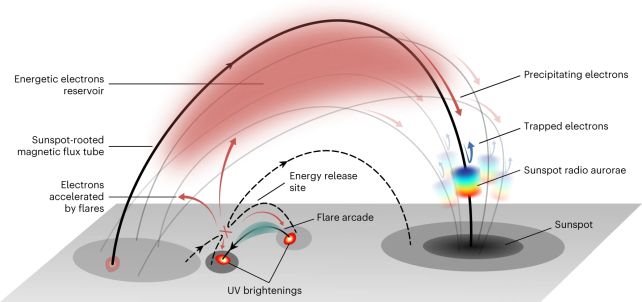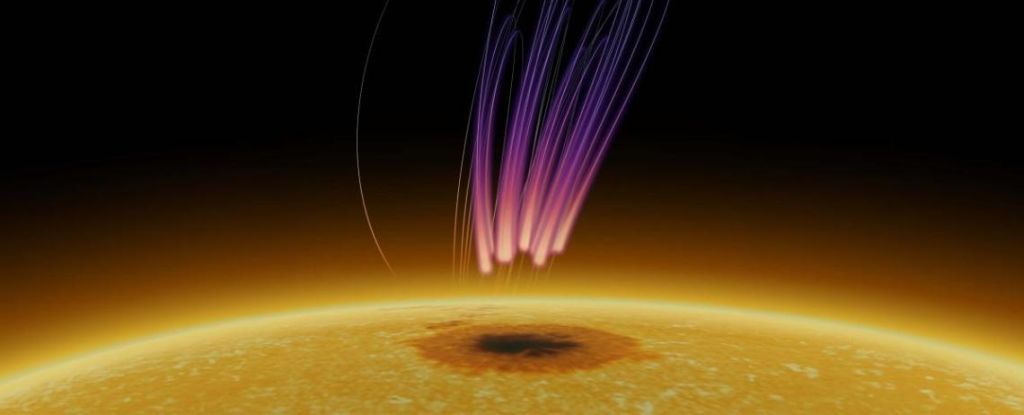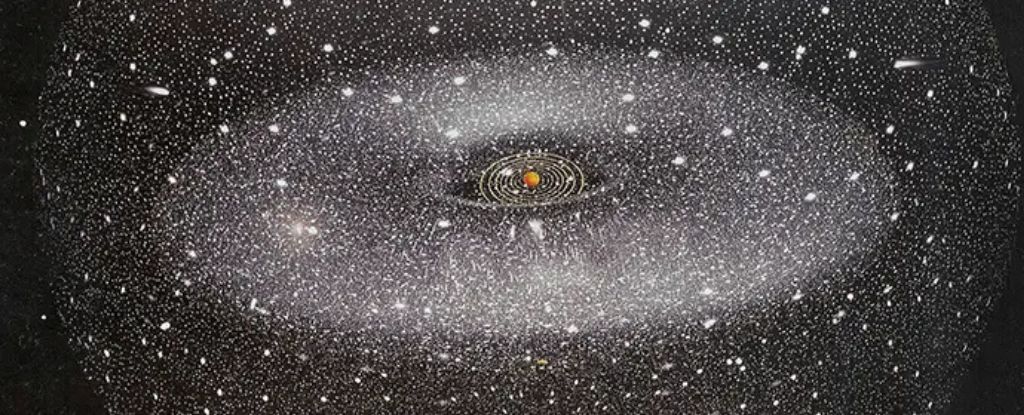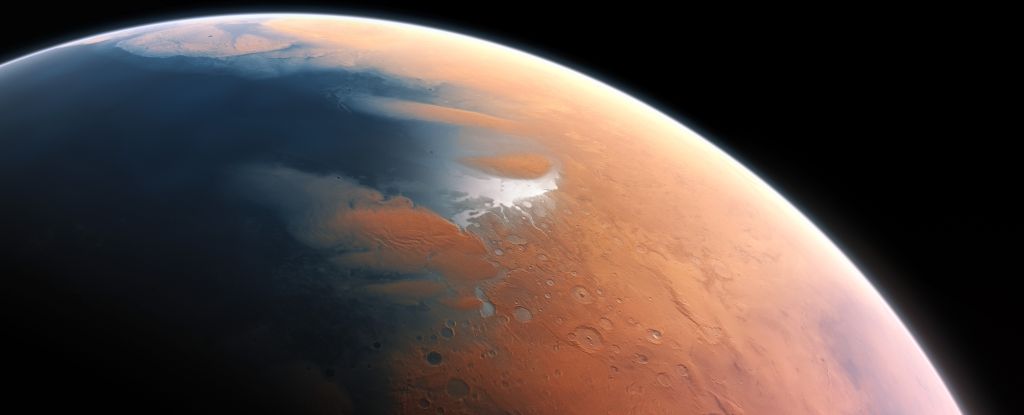In a spectacular discovery, scientists have detected aurora-like emission in the atmosphere of the Sun.
At an altitude of some 40,000 kilometers (25,000 miles) above a burgeoning sunspot growing in the solar photosphere, a team of astronomers led by Sijie Yu of the New Jersey Institute of Technology recorded a never-before-seen type of long-lasting radio emission.
The Sun emits all kinds of radiation as it goes about its business, but this, the team says, resembled nothing so much as an aurora.
“We’ve detected a peculiar type of long-lasting polarized radio bursts emanating from a sunspot, persisting for over a week,” Yu says.
“This is quite unlike the typical, transient solar radio bursts typically lasting minutes or hours. It’s an exciting discovery that has the potential to alter our comprehension of stellar magnetic processes.”
Glowing, undulating aurorae are one of the most spectacular sights on Earth, but they’re far from unique to our home planet, even if their form varies widely. Aurorae have been detected on every single major planet in the Solar System, and even the four Galilean moons of Jupiter.
They form when solar particles get caught up in magnetic field lines, which act as accelerators that amp up the particles’ energy before depositing them, usually in an atmosphere, where they interact with the atoms and molecules therein to produce a glow. Here on Earth, we can see that glow dancing across the skies.
But visible light is only part of the emission spectrum of aurora. There’s a radio component, too. And, although the Sun emits a lot of radio emission via other processes, including bursts of radio activity, the emission hovering over the sunspot was similar in profile to radio aurorae.
This makes fascinating sense. Sunspots are temporary darker, cooler regions on the surface of the Sun – its photosphere – that are caused by regions with unusually powerful magnetic fields that constrain the solar plasma. And there is nowhere in the Solar System as riddled with solar particles as the Sun itself.
So it stands to reason that magnetic field acceleration of solar particles could take place there – only much, much more powerfully than on Earth, due to the much more powerful solar magnetic fields.
Yu says the team’s spatially and temporally resolved analysis “suggests that [the emissions] are due to the electron-cyclotron maser (ECM) emission, involving energetic electrons trapped within converging magnetic field geometries.”
“The cooler and intensely magnetic areas of sunspots provide a favorable environment for the ECM emission to occur,” she says, “drawing parallels with the magnetic polar caps of planets and other stars and potentially providing a local solar analog to study these phenomena.”

Actually, it’s not unheard of for a star to emit auroral radio signals. A few years ago, a team of scientists identified a number of stars emitting uncharacteristic radio waves, which they linked to the presence of a closely orbiting exoplanet, whose atmosphere was being slurped into the star to generate auroral emission.
The planets of the Solar System are too far away from the Sun to procure a similar effect, but we’re close enough to the Sun to see fainter aurora-type emissions that we’d miss in a distant star.
The researchers believe that flare activity in regions not far from the sunspot inject energetic electrons into magnetic field loops rooted in the sunspot, powering what the researchers are calling “sunspot radio aurora”. It’s some of the clearest evidence yet for the mechanisms involved, suggesting new ways to study stellar magnetic activity, and starspot behavior on distant stars.
The team plans to study archival data to see if they can find evidence of the aurora in previous bursts of solar activity.
“We’re beginning to piece together the puzzle of how energetic particles and magnetic fields interact in a system with the presence of long-lasting starspots,” says solar physicist Surajit Mondal of the New Jersey Institute of Technology, “not just on our own Sun but also on stars far beyond our solar system.”
The research has been published in Nature Astronomy.





